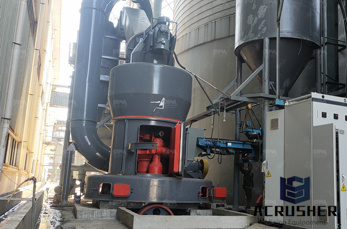 WhatsApp)
WhatsApp)
A nontoxic mineral, gypsum can be helpful to humans, animals, plant life, and the environment. While the majority of gypsum produced in North America is used to ...

Gypsum can be used quite a wide variety of things. On the manufacturing side of things, gypsum is used to make wallboard (drywall), cement, and certain types...

Gypsum Rock : Gypsum is an inert, safe mineral that has been used in a variety of applications for centuries. It was used as plaster in the Egyptian pyramids, and ...

Reclaimed water can be satisfactorily used if amendments, such as gypsum and watersoluble polymers, are also used. Gypsum Decreases Dust Erosion

70 GYPSUM (Data in thousand metric tons unless otherwise noted) Domestic Production and Use: In 2013, domestic production of crude gypsum was estimated to be ...

Sep 21, 2017· Gypsum is a soft mineral, calcium sulfate, bonded to two molecules of water. Benjamin Franklin was a big proponent of using gypsum to improve plant growth ...

"Even though more than 15 million tons of gypsum are used in the United States in a typical year, and even though the average person is surrounded by gypsum ...

Gypsum Helps Recondition Clay And Hardpan Type Soils Are clay or hardpan problems in your garden? Gypsum may be just the answer to help break .

Gypsum is a mineral found in crystal as well as masses called gypsum rock. It is a very soft mineral and it can form very pretty, and sometimes extremely

Alabaster is a common name used for particularly pure deposits of massive gypsum. Gypsum also occurs in crystal form, with the two most common varieties being large clear crystals that are often termed selenite, and fibrous crystals, known as satin spar.

Gypsum from drywall or wallboard can be used in agriculture applications. Generally it is processed as refuse or "seconds" with regard to the board not meeting specs for .

The United States is the world''s leading consumer of wallboard at over 30 billion square feet per year. Some gypsum is used to make Portland cement, ...

Jun 12, 2014· Toowoomba''s gardening guru Brian Sams presents a series of gardening tips in conjunction with .

Gypsum can help stabilise aggregate structure in some soils. Use of gypsum in other soils will not improve soil physical or chemical properties, so it is important to understand the processes that occur when gypsum is added to soil. Water, air and roots move between soil particles and aggregates (also called peds).

Gypsum is an evaporite mineral most commonly found in layered sedimentary deposits in association with halite, anhydrite, sulfur, calcite, and dolomite. Gypsum () is very similar to Anhydrite (CaSO4). The chemical difference is that gypsum contains two waters and anhydrite is without water.

Anhydrite can be substituted for gypsum in some of its uses. Both minerals are crushed for use as a soil treatment, and in this purpose anhydrite is superior. One ton of anhydrite has more calcium than one ton of gypsum because .

Video embedded· This Home Depot guide illustrates detailed description of proper applications of lime and gypsum fertilizers, including information on .

Gypsum is called the retarding agent of cement which is mainly used for regulating the setting time of cement and is an indispensable component. Without gypsum, cement clinker can condense immediately by mixing with water and release heat.

Start studying gypsum dental materials. Learn vocabulary, terms, and more with flashcards, games, and other study tools.

Gypsum plaster, or plaster of Paris, ... The plaster used in most lath and plaster construction was mainly lime plaster, with a cure time of about a month.

Drywall (also known as plasterboard, wallboard, gypsum panel, sheet rock, or gypsum board) is a panel made of calcium sulfate dihydrate (gypsum) with or without additives and normally pressed between a facer and a backer (typically thick sheets of paper). It is used to make interior walls and ceilings.

Gypsum is a soft sulfate mineral composed of calcium sulfate dihydrate, with the chemical formula CaSO4·2H2O. It is widely mined and is used as a fertilizer, and as the main constituent in many forms of plaster, blackboard chalk and wallboard.

Gypsum is an industrially important mineral. It is the primary ingredient of plasterofParis, which is finely ground Gypsum, and it is used in the production of cement.

Gypsite is a rock deposit that contains an abundance of the mineral gypsum (), along with other trace elements, such as calcium, magnesium, copper, zinc, potassium, and iron. These trace elements are not usually found in hard rock gypsum deposits.
 WhatsApp)
WhatsApp)